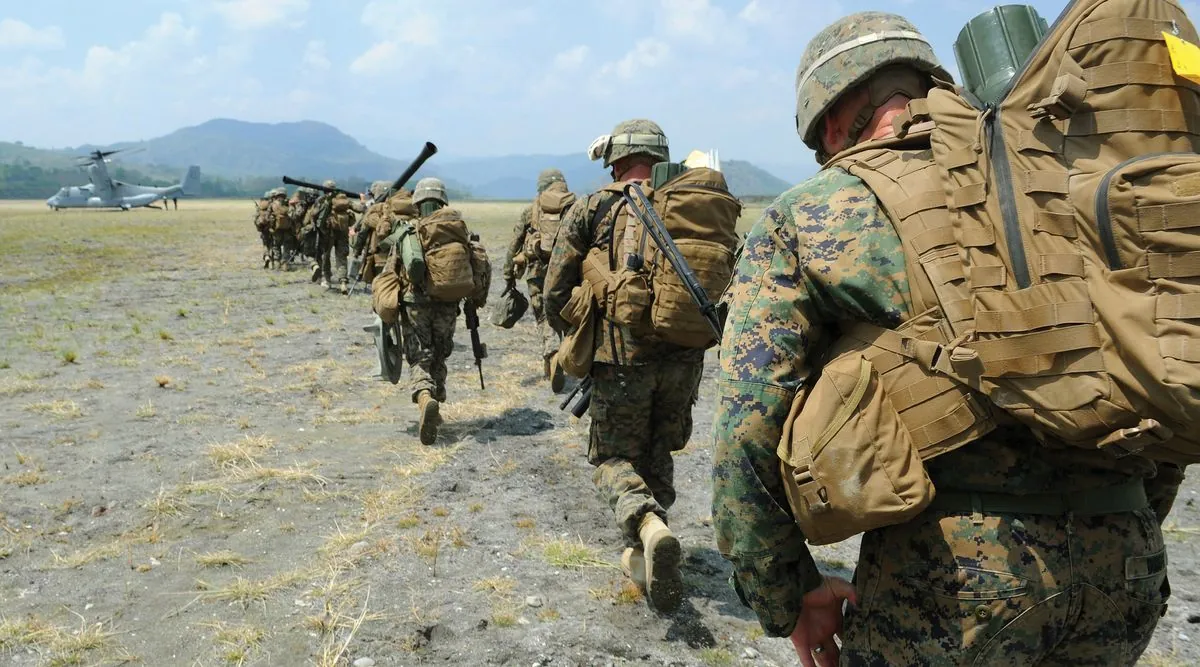US-Philippine Alliance Strengthens Amid Rising Tensions with China
The US and Philippines bolster military cooperation through extensive joint exercises, countering China's regional influence. Economic partnerships and infrastructure projects further solidify their alliance.

The United States and the Philippines have significantly reinforced their security alliance, as evidenced by the conclusion of their largest-ever joint military exercises on May 8, 2024. This strengthened partnership plays a crucial role in addressing China's growing influence in the South China Sea and beyond.
Under the leadership of President Ferdinand Marcos Jr., the Philippines has rekindled its longstanding security ties with the United States. This marks a notable shift from the policies of his predecessor, Rodrigo Duterte, who favored closer relations with Beijing. The renewed alliance has led to increased arms transfers and infrastructure commitments from Washington, bringing Manila closer to the US and its regional allies, including Japan.
China has responded to this shift by intensifying pressure on Philippine vessels in the South China Sea, where territorial disputes persist among several nations. In a concerning incident in June 2024, a Philippine navy sailor lost his thumb during a confrontation with the Chinese Coast Guard near the disputed Second Thomas Shoal.
The United States, bound by a mutual defense treaty with the Philippines since 1946, has been eager to support its ally. This treaty, signed on August 30, 1951, forms the cornerstone of their military cooperation. The majority of Filipinos view the US as a valuable partner in maintaining their country's territorial sovereignty, contrasting with the previous administration's pro-China stance.

The recent Balikatan ("shoulder-to-shoulder") exercises expanded into strategic locations, including the South China Sea and the Luzon Strait. These maneuvers involved simulating coastal invasion repulsion and maritime strike exercises in Ilocos Norte, the closest mainland Philippine province to China. The exercises also extended to the remote Batanes province, consisting of 10 islands located less than 125 miles from Taiwan.
In a significant development, the US briefly deployed its Typhon mid-range missile launcher in the Asia-Pacific region for the first time. This system, capable of reaching targets in Taiwan, mainland China, and Chinese military bases in the South China Sea, represents a considerable upgrade in range compared to existing missile systems.
The Philippines, an archipelagic nation comprising over 7,600 islands, is working to modernize its military capabilities. However, this process is progressing slowly, with the full benefits not expected until the mid-2030s. In the interim, Manila relies heavily on US support for potential conflicts.
Beyond military cooperation, the US is making unprecedented commitments to the Philippines. A trilateral summit between Marcos Jr., US President Joe Biden, and Japanese Prime Minister Fumio Kishida announced an economic corridor on Luzon island. This project, part of the Partnership for Global Infrastructure and Investment, aims to counter China's Belt and Road Initiative.
The economic corridor will link various infrastructure projects, including ports, railways, clean energy facilities, and semiconductor supply chains. It will connect economic zones at Subic Bay and Clark, both former US military bases, with major ports in Manila and Batangas. This initiative could reduce the Philippines' dependence on Chinese imports and open its critical minerals market to Japan and the US.
"The corridor will also serve as a major test of Washington's ability to provide an alternative to Chinese promises of loans and lavish infrastructure projects through the Belt and Road Initiative."
While the current US-Philippine relationship appears robust, it may face challenges in the future. Political changes in both countries, such as the potential election of a different US president or shifts in Philippine leadership, could impact the alliance's trajectory.
As the Philippines navigates its complex geopolitical landscape, the strengthened alliance with the United States provides a counterbalance to China's regional ambitions. However, the long-term stability of this partnership will depend on continued mutual commitment and the ability to deliver on promised economic and security benefits.


































